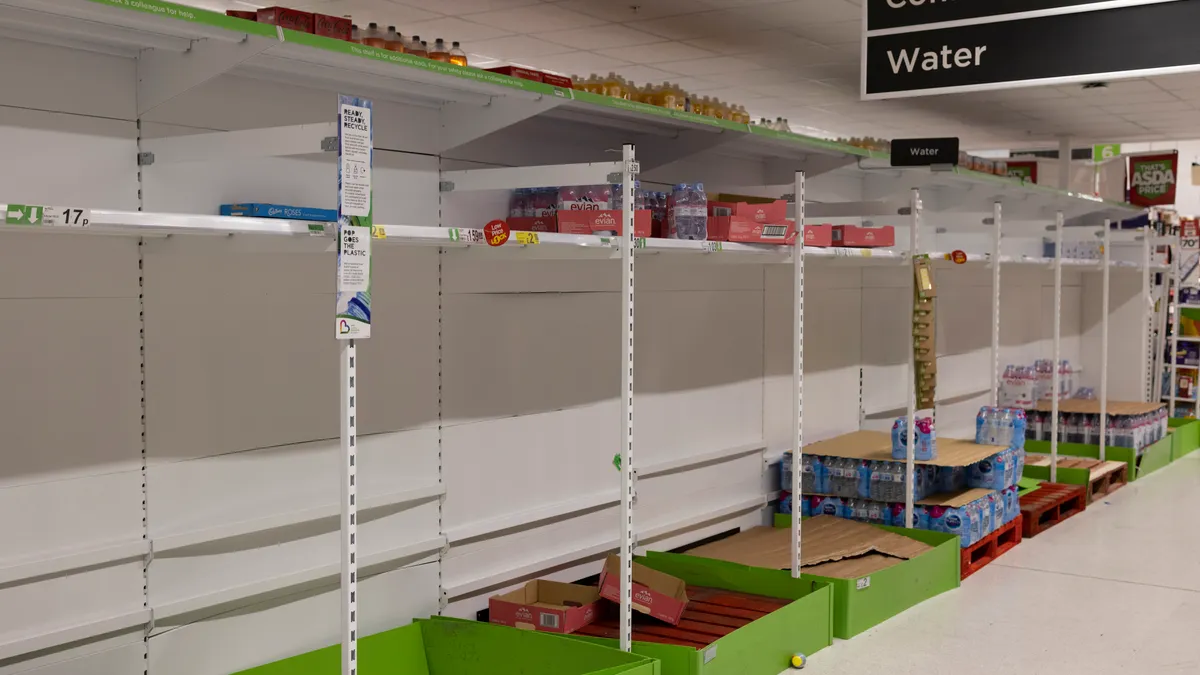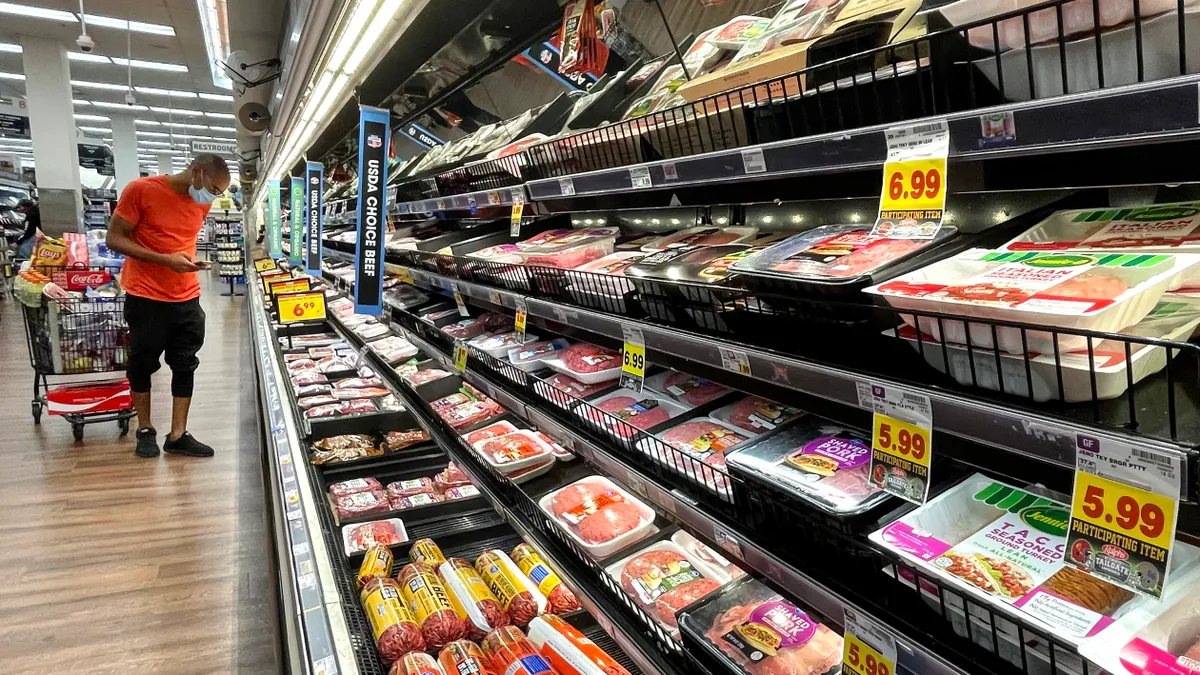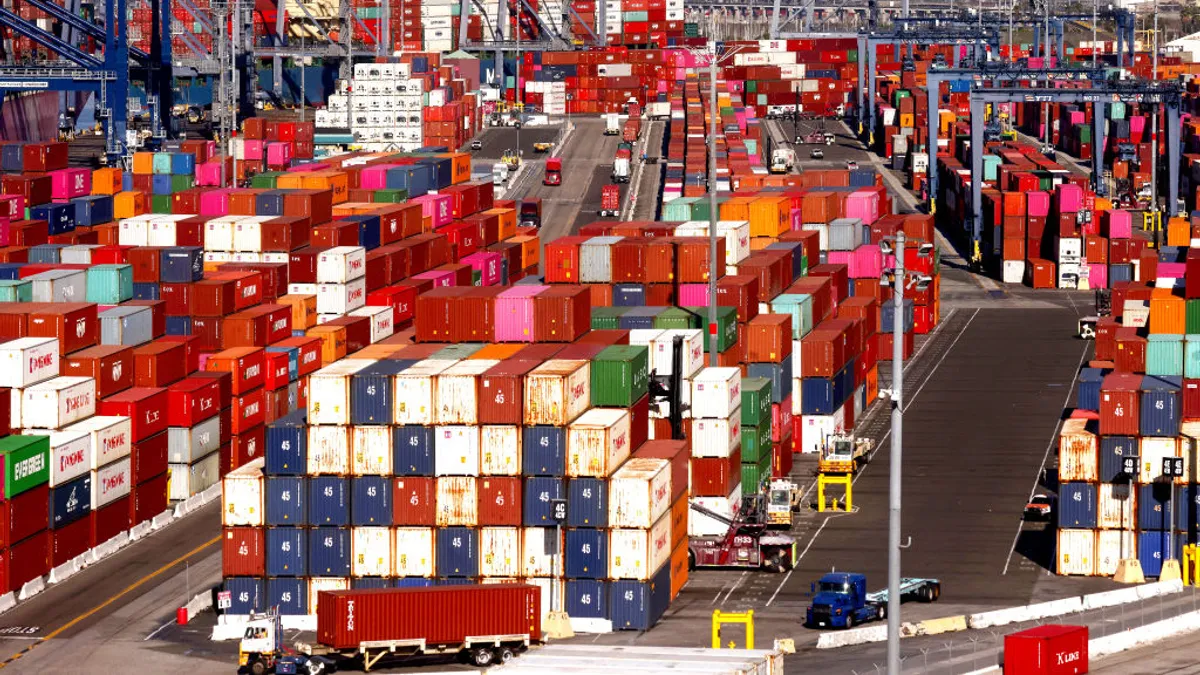Editor's note: This story is part of a series on the trends, opportunities and challenges supply chains will face in 2022. Read the full outlook here.
Demand remains extremely strong for the construction of warehouses and distribution centers, and that should continue in 2022, according to industry experts.
"We had a record-breaking year [in 2021] for pretty much every fundamental we track: vacancy, rental rate growth, leasing activity, under construction," James Breeze, global head of industrial real estate at CBRE, a Texas-based commercial real estate services and investment firm, told Construction Dive. "We don't see anything changing [this] year."
Not only does he anticipate the same level of activity in the sector as was seen in 2021, he expects vacancy rates to remain at historic lows, with rents continuing to rise at a quick pace.

There is a steady flow of distribution and warehouse projects happening in early 2022, Mike Jones, project executive at Pankow Builders told Construction Dive, a California-based construction engineering company.
Major transportation corridors near large metropolitan areas such as San Francisco, Dallas, New York, Seattle, Miami, Houston and Chicago, continue to be "hot markets for the distribution and warehouse space," said Jones.
Proximity to ports, airports and trucking facilities are also underlying factors for determining where warehouse distribution facilities demand will continue to grow, Jones said.
Matt Rotolante, president of Lee & Associates South Florida, a commercial real estate brokerage firm, pointed to the continued growth of e-commerce as the underlying catalyst for the ongoing boom in warehouse and distribution center construction.

"We're starting to see a lot more automation," Rotolante told Construction Dive. "A lot of it is becoming computerized where robots are picking and placing the product from the truck, onto the warehouse racks and then pulling it as well."
He also noted that it's the details of their design that set this year's warehouses distribution centers apart, including larger parking requirements and higher ceilings. Some warehouses, for example, are now two stories high.
"We're certainly seeing a different style of construction," Rotolante said. "Historically, buildings were built 24-foot clear or 22-foot clear. Now, we're seeing them as high as 36 foot-clear just for regular distribution purposes."
Brian Sudduth, president of Miller Construction, a construction company with more than 500 completed commercial projects for the private sector in Florida, agreed the designs and specifications of these structures are changing as quickly as they are being built.
In addition to these large projects, smaller buildings to support last-mile distribution are also needed, Sudduth told Construction Dive. Jones agreed.
"Sites that are close to the core of a major metropolitan area to handle that last mile distribution and servicing is key," said Jones. "Part of that last-mile is repurposing buildings for a new use."
For example, dormant shopping center parcels are becoming an alternative for mini-warehousing and last mile distribution facilities, whether by retrofitting a defunct department store or large parts of the shopping center parking lot.
Breeze predicted that certain markets will see the most groundbreaking development for warehouses and distribution centers in terms of percentage growth over the next year or so. They include:
- Louisville, Kentucky
- Greenville, South Carolina
- Kansas City
- Phoenix
- Las Vegas
- Salt Lake City
- Central Florida
"There is very strong demand for first-generation space. The leasing is really strong, which points to this development continuing for the foreseeable future," said Breeze. "I do think there's markets that are going to start having a lot more construction than they did before."





















